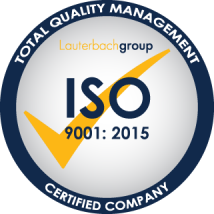By Shane Lauterbach, President, Lauterbach Group, Inc.
I recently had the opportunity to join industry peers at the Digital Packaging Summit for a panel discussion on Digital Integration & Operational Efficiency in Label Manufacturing. It was a privilege to sit alongside respected leaders from CCL, Duramark Technologies, and Lewisburg Patterson as we explored how digital printing is reshaping our industry—and what it truly takes to deliver on its promise.
While each of us brought a unique perspective, one message was clear: digital printing is not just a new piece of equipment. It is a business transformation that requires ongoing investment, alignment, and commitment.
Investing in People, Processes, and the Ecosystem
At Lauterbach Group, our digital journey has reinforced a simple truth: technology alone doesn’t transform a business—people do. That’s why we’ve prioritized reinvestment across three core areas:
- Equipment, to ensure we’re operating with the highest-performing and most reliable digital platforms
- Technology and workflow systems, including our work with partners like SalesLink Resources and WMEP (Wisconsin Manufacturing Extension Partnership), to strengthen data visibility and operational throughput
- Our people, who ultimately bring technology to life and drive the value customers experience
This ecosystem-first mindset was echoed throughout the panel. Digital printing works best when every part of the organization—from operations to customer service to sales—is aligned around its unique capabilities.
Selling Value, Not Just Print
One of the biggest opportunities in digital printing lies in how we educate and enable our sales teams. Digital isn’t just “another way to print.” It’s a way to help customers rethink their entire supply chain.
Digital platforms allow converters to provide faster turn times, smaller run sizes, and more responsive inventory strategies. Duramark shared their impressive three-day average turnaround time—a powerful example of what modern digital workflows can achieve.
But speed alone isn’t the full story. The real value comes from what speed enables:
- Lower inventory carrying costs
- Reduced waste and obsolescence
- Improved agility for promotions and product launches
- More frequent design refreshes without penalty
Helping customers understand this broader value shifts the conversation from unit price to total cost advantage—and that’s where digital becomes a real differentiator.
Utilization: The Multiplier for Sustainable Growth
A theme that resonated with me during the panel was the concept of labor utilization. As Lee Pretsell of CCL noted, one hour of labor can create multiple positive outcomes when supported by digital technology.
This “one-to-many” approach—where an operator can oversee multiple presses or a salesperson can engage a larger pool of high-value prospects—is essential for scaling a digital platform. It’s also the foundation for sustainable reinvestment. When utilization improves, profitability strengthens, and the organization can continue reinvesting in innovation and people.
For us at Lauterbach Group, utilization isn’t just a metric. It’s a mindset that fuels continuous improvement.
Navigating Industry Challenges Together
While the opportunities are compelling, the panel also highlighted areas where our industry still has work to do.
- Material Standardization – We’ve all seen the range of substrates tighten, and customers often default to what they’ve always used. More education—and more collaboration—is needed to help brands adopt materials optimized for digital platforms.
- Tariffs – Current tariff activity is something we’re monitoring closely. At this point it’s manageable, but it remains a variable for all manufacturers.
- Equipment Maturity and Readiness – Several panelists pointed out that digital technology sometimes reaches converters before it’s fully commercial-ready. This creates a confidence gap between manufacturers and vendors. As an industry, we need stronger real-world testing and more rigorous validation of materials and workflows before equipment reaches the production floor.
Looking Ahead: A More Agile, Efficient Future
What made the Digital Packaging Summit discussion so valuable was the collective recognition that digital printing isn’t an endpoint—it’s a continuous evolution. Middle-market brands are growing, SKU complexity is increasing, and speed-to-market is now a competitive requirement.
Digital gives brands the flexibility and responsiveness they need. But it also gives organizations like Lauterbach Group the opportunity to build smarter, more efficient, and more scalable operations.
Our commitment is to continue investing—deliberately and consistently—in the technology, systems, and people that will carry this industry forward. I’m grateful for the chance to share insights with other leaders, and I’m even more excited about the future we’re building together.






